The Art of Testimony
Of all the epithets hurled at documentary films, few have had as much staying power as the accusation that nothing is duller than nonfiction movies dominated by so-called talking heads. An ambitious program of films at Anthology Film Archives in New York entitled "Talking Head"—featuring work by such disparate directors as Martin Scorsese, Hans-Jürgen Syberberg, Andy Warhol, Claude Lanzmann, and Shirley Clarke—succeeds brilliantly in inverting the usual critical claims that talk fests are irredeemably "uncinematic." Scorsese, whose credentials as a cinematically adept director are unchallenged (even by those who don't care for his films), observed some years ago that his small-scale documentaries—Italianamerican (1974) and American Boy (1978)—liberated him from "dissolving from one image to another" and imbued his film practice with greater "clarity." In other words, he learned that fast cutting and the mobile camera, useful as they are in a fictional context, are not absolutely necessary for compelling storytelling. All that's needed is a lucid subject, skilled in either the art of the raconteur or the ability to serve as a witness to history, and a director intelligent enough to ask pertinent questions and know when to hold back and allow the nonfictional "stars" to shine.
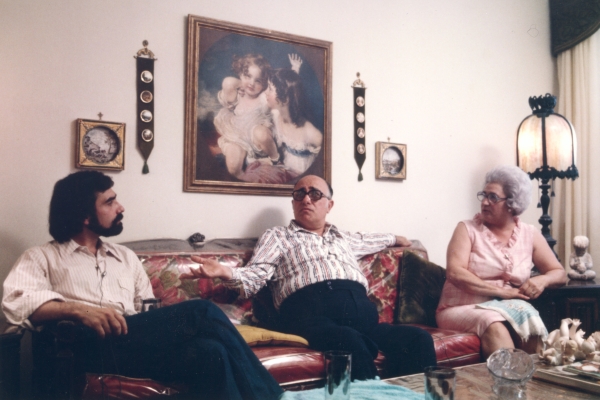
Martin Scorsese interviewing his parents in Italianamerican
The Anthology series makes clear that the garrulousness allowed by the "talking head" genre implicitly challenges the superficiality imposed upon traumatic events like the Holocaust and the legacy of Nazi Germany by more conventional nonfictional approaches. Freed of the obligation to use interviews as mere bridges to stock footage or slick graphics, documentaries that eschew obtrusive editing and let articulate individuals let it all hang out for the camera can benefit from the unremitting spotlight on a remarkable individual. Syberberg's marathon, five-hour The Confessions of Winifred Wagner (1975), for example, sheds a complex light on someone who, unlike Lars von Trier, felt genuinely "sympathetic" to Hitler, by having her dig herself into a rhetorical hole and eliciting a portrait, both repellent and strangely engrossing, of a woman who could maintain a close relationship with the Führer and believe that the extermination of the Jews was less "Hitlerian" than a product of the excesses of radical Nazis such as Julius Streicher. Winifred, the British-born daughter-in-law of Richard Wagner, insists that her father-in-law, who died years before the dawn of National Socialism, was not a true anti-Semite—he merely wanted to "neutralize" the influence of Jews on German cultural life. She fervently believes that, during her World War II tenure as the organizer of the Bayreuth Festival, there was nothing "political" about her alliance with Hitler; the dictator was just a benevolent patron of the arts. The fascination of Syberberg's film resides in our inability to determine if she is hopelessly naive or a master dissembler—or, perhaps, a bizarre combination of both.
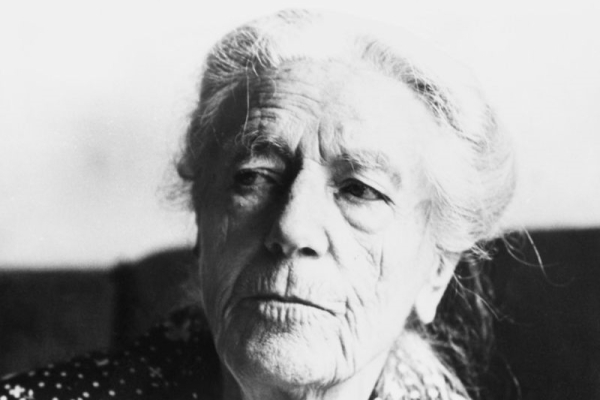
Winifred Wagner in The Confessions of Winifred Wagner
In a completely different vein, Lanzmann's Sobibor, October 14, 1943, 4 P.M. (2001) highlights the moving testimony of Yehuda Lerner, whose participation in a death camp uprising challenges the myth of Jewish passivity during the Holocaust. Lerner's account of how he outwitted his captors and escaped from the Sobibor death camp possesses all the qualities of a good yarn—while also unearthing a hidden crevice of 20th-century history. Christoph Hübner's Thomas Harlan—Moving Shrapnel (2006) is a somewhat more complex portrait of another man who might be rightly deemed heroic. Son of Veit Harlan, whose Jew Süss was by far the most notorious anti-Semitic film produced during the Nazi era, Thomas Harlan devoted his life to undoing his father's legacy by engaging in archival research on war criminals and embracing a leftist stance meant to be the antithesis of the elder Harlan's complicity with fascism. But Thomas Harlan's monologues fuse a passion for justice with undiluted love for his prodigal dad. In this respect, Hübner's film draws us into a riveting Oedipal drama that coexists, uneasily if intriguingly, with a vital slice of cultural history.
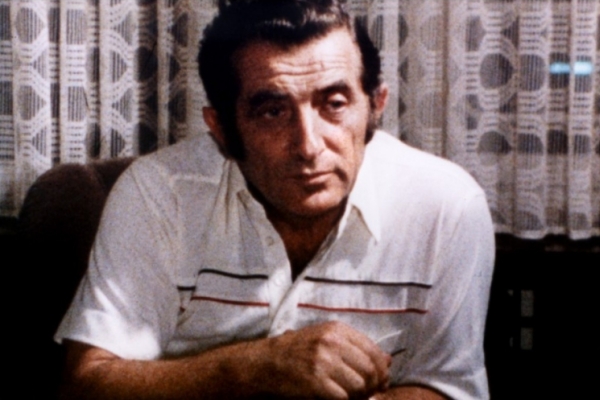
Yehuda Lerner in Sobibor, October 14, 1943, 4 P.M.
Of course, it would be misleading to maintain that talking head films, simply because they abjure heavy-handed editing strategies, are inherently purer or less manipulative than more mainstream documentaries. While Syberberg is unfailingly polite to Winifred Wagner during their interview, he continually intercuts her testimony with salient quotations from Theodor Adorno, Walter Benjamin, and Thomas Mann that clearly serve as antidotes to her self-serving diatribes. One of the series' most unsettling films, Gerhard Scheumann and Walter Heynowski's The Smiling Man (1966), is an exercise in unrepentant manipulation. Impersonating West German journalists, the East German filmmakers corner their prey, a former Nazi named Siegfried Müller who shamelessly defends coming to the aid of Mobutu's authoritarian, but staunchly "anti-Bolshevik," thugs. Oblivious to the filmmakers' agenda, the drunken Müller becomes a colorful emblem of the West's willingness to align itself with former fascists to achieve imperial goals in the Third World. Yet it's also difficult to disagree with the Encyclopedia of German Cinema's verdict that "Heynowski and Scheumann's methods left much to be desired from an ethical standpoint"—an objection that could also be leveled against certain films by Errol Morris, Nick Broomfield, and Michael Moore, documentarians not known for their fondness for solitary talking heads.
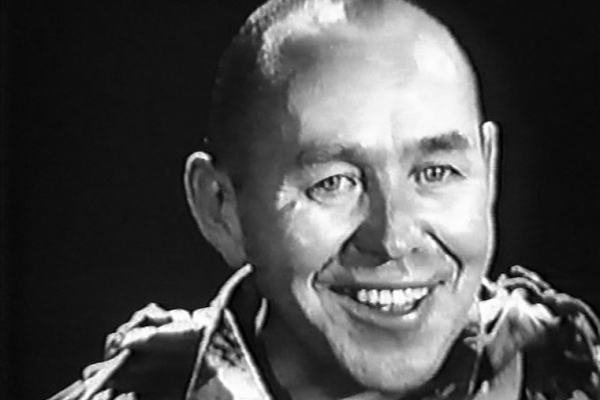
Siegfried Müller in The Smiling Man
If Scheumann and Heynowski are consciously eliciting a self-incriminating performance from their hapless subject, some other films in the Anthology series benefit from the self-conscious performances of charismatic eccentrics whose daily lives are bound up with the creation of artifice. Shirley Clarke's Portrait of Jason (1967), one of the most famous talking head movies of the late '60s, depicts one representative of the era's underground gay subculture with startling vividness and captures this man's response to a filmmaker's disturbing provocations. A hustler who christens himself Jason Holliday because he hates the connotations of his real name—Aaron Payne—Clarke's dapper protagonist overwhelms the viewer with a cascade of words describing his sexual exploits and antipathy toward the straight world. Increasingly inebriated as the film reaches its conclusion, and bombarded with scathing questions by offscreen interviewer Carl Lee, the initially self-assured Holliday is transformed into a self-pitying wreck. Still, Holliday, despite his dissolute persona, retains his charm and fragile integrity. (In his recent book, The Right to Play Oneself: Looking Back on Documentary Film, documentary theorist Thomas Waugh maintains that "the interview has long been shunned by the purist inheritors of the noninterventionist American school of vérité, macho fetishists of untempered visual surfaces; it has been denounced by critics muttering about "talking heads" as if they had never seen The Sorrow and the Pity or Portrait of Jason.")
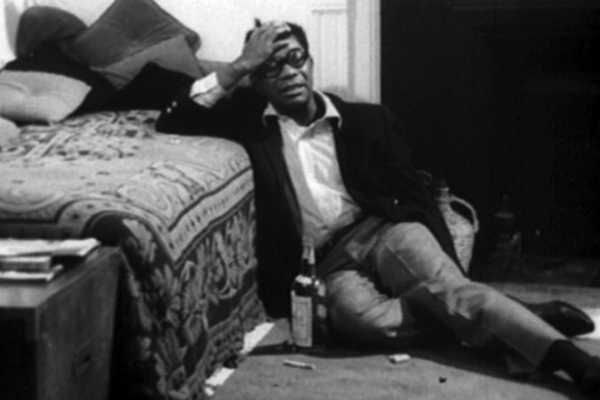
Aaron Payne in Portrait of Jason
Comedy and pathos are also intertwined in several Warhol films that fuse the urge to document natural-born performers with an aggressive compulsion to humiliate them. In Screen Test #1 (1965), the irresistible force of playwright Ronald Tavel attempts to provoke a nearly immovable object: the actor Philip Fagan. Despite being encouraged by Tavel to act out ludicrously risqué scenarios, Fagan remains almost stoically impassive; a decision to be silent and above the fray appears to be his passive-aggressive response to Tavel's campily sadistic provocations. But Outer and Inner Space (1965), featuring the doomed Factory superstar Edie Sedgwick, is an even more striking Warhol tour de force. Shot in 16mm, this exercise in dual-screen projection employs early video technology with extraordinary finesse. Seated in front of a monitor displaying her own image, Sedgwick provides a running commentary on her televised doppelgänger. Although technically a film, Outer and Inner Space looks forward to some of the conclusions reached in 1976 by Rosalind Krauss in her classic essay "Video: the Aesthetics of Narcissism." Sedgwick is caught between the camera and the video monitor, which, according to Krauss, "re-projects the performer's image with the immediacy of a mirror." Oscillating between her own anguish and a poignant desire to be a glamorous star, Sedgwick—and her bifurcated self—are illuminated by the use of video playback and the dual-projection format.
The awareness that autobiography is usually infused with self-invention, if not outright fabrication, is one of the most prominent motifs in this showcase of talking heads. This tension is hilariously evident in Joe Gibbons's short films, which merge conceptual gags and confessional rants, as well as a selection from Saul Levine's Driven (2003) series featuring Gibbons, a longtime MIT film instructor and avant-garde filmmaker. Synthesizing autobiographical tidbits with fictional embellishments, Gibbons is akin to a comic version of Dostoyevsky's Underground Man. In Levine's film, he takes the viewer on a cockeyed tour of the Boston-Cambridge area. Alternating between self-deprecation and self-aggrandizement, Gibbons gives us his idiosyncratic version of the Freedom Trail. Instead of pointing out noteworthy historical monuments like the Old North Church, Gibbons focuses on bookshops where he successfully shoplifted and drab buildings where he met up with other raffish cronies. Oddly enough, a similar dynamic is evident in Ferry Radax's Thomas Bernhard—Three Days (1970), a much more sober portrait of the late Austrian novelist and playwright. Radax pinpoints the chasm between Bernhard's own self-image and his public persona. Thinking himself utterly unlike the serious, highbrow novelist he reads about in the popular press, Bernhard nevertheless comes off as nearly a caricature of a European modernist writer. Like Gibbons, Bernhard is an obsessive whose gift for gab unveils the vicissitudes of the performing self.
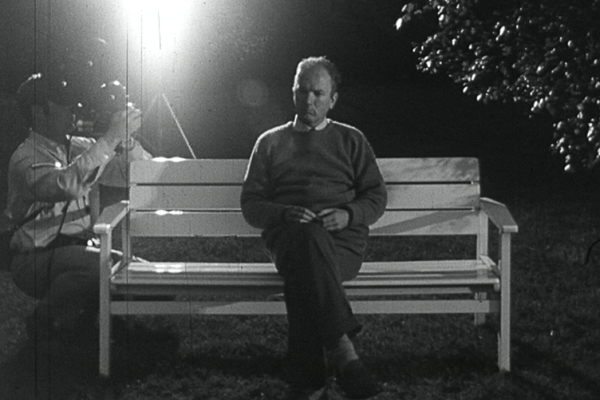
Thomas Bernhard in Thomas Bernhard—Three Days
The range of the films in "Talking Head" pays tribute to this subgenre's user-friendly pliability. Benefiting from self-imposed formal constraints, these documentaries can either address historical quandaries or examine ultra-hermetic personal preoccupations. It's also indisputable that talking head films frequently succeed in wringing high drama from a single individual's testimony. The fight for survival recounted by an elderly victim of Mao's "anti-rightist" campaigns in Wang Bing's Fengming: A Chinese Memoir (2007) provides as much fodder for nail-biting suspense as any action film. In addition, the simple act of faithfully documenting testimonies, confessions, and diatribes is an important moral, as well as cinematic, gesture. As Jean Eustache, whose Numéro Zéro (1971/2003) is one of the Anthology series' key films, once observed, "You have to record things; whether they're pretty or not, they're important." ![]()
LATEST ARTICLES
-20140814-173707-thumb3.jpg)
Fighting Words
by Imogen Sara Smith
posted August 12, 2014

Fighting Words, Part 2
by Imogen Sara Smith
posted August 20, 2014

On the Margins: The Fil…
by Andrew Chan
posted August 12, 2014

Robin Williams: A Sense…
by David Schwartz
posted August 12, 2014
 The Art of Testimony
The Art of Testimony
KEYWORDS
documentaryTHE AUTHOR
Richard Porton is one of the editors of Cineaste in New York. He is the author of Film and the Anarchist Imagination (Verso) and the editor of two forthcoming anthologies, On Film Festivals (Wallflower Press) and Arena 1: Cinema and Anarchism (PM Press).
More articles by Richard Porton
